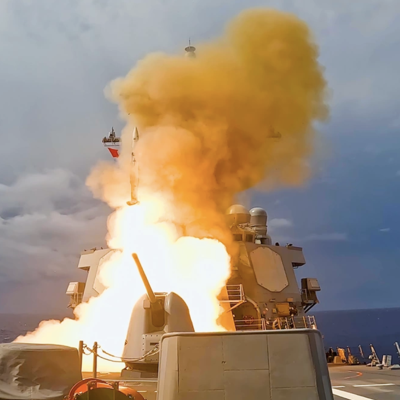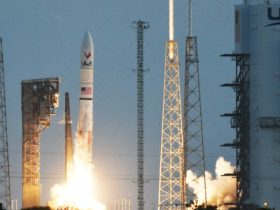Colorado-based propulsion company Ursa Major plans to start building solid rocket motors next year at scale—moving from concept to production in just a year and a half.
“We have, in the last 18 months, rapidly scaled our internal team and the technology of making solid rocket motors. We’ve static fired over 300 [motors] this year. We’re rapidly scaling capacity,” said Bill Murray, Ursa Major’s chief product officer and head of solid rocket motors.
The company is one of a few new entrants eyeing the solid rocket motor business—an industry that has been consolidated into two domestic suppliers: Aerojet Rocketdyne and Northrop Grumman. With global conflict straining existing production lines, the Pentagon has been trying to foster new ones.
In September, the Pentagon awarded Ursa Major $12.5 million to advance the company’s motor manufacturing process, using money from the Office of Strategic Capital, an entity created to fuel technology development through private investor funds. This followed an April award from the Navy to test the company’s Mk 104 motor, used in the Navy’s Standard Missile family of weapons.
The U.S. military’s consumption of Standard Missiles is “completely unsustainable right now in current conflicts,” Murray said. The Navy has been running through its inventory of missiles during a year of engagements in the Mediterranean and Red Sea regions.
Ursa Major is using a new manufacturing process it calls Lynx, which uses 3D printing to build multiple types of motors without expensive re-tooling.
Murray said the industry hasn’t changed the way it’s produced rocket motors in more than 60 years, using inflexible, expensive production lines that need long-lead tooling and are vulnerable to parts shortages.
The company’s new Lynx approach can adapt to demand changes, he said.
“Really, it’s just more value-added to the U.S. taxpayer, and again, faster delivery. That really matters a lot, especially when new conflicts arise [and] we run out of one munition that we really didn’t forecast appropriately. We can backfill that very quickly with our process,” Murray said.
The company is expanding its facilities and hiring more people in Berthoud, Colorado, where it produces inert components, motor cases and energetics; and Youngstown, Ohio, where it does a lot of the additive manufacturing.
Murray didn’t say how many motors it intends to build in Colorado, but said they aim to be in production on “multiple motor programs in 2025 and 2026.” The Lynx process can produce motors between two and 22 inches in diameter, which includes missiles like the Stinger, Javelin, GMLRS, and air-defense interceptors.
The company’s motor programs still need to get through several qualifications before they can be used by the military, but that process will happen as the company gets into low-rate initial production, Murray said. In order to get into qualification, the company needs to reach a certain production capacity because it’s proving out the manufacturing process, in addition to the motor design.
Ursa Major plans to make many components in-house, everything from cases to energetics, reducing reliance on the strained SRM supply chain.
“If we’re going to do motor production the exact same way everyone else is, we’re going to rely on the exact same strained vendors that are already trying to ramp up their production. So if we can go closest to the dirt…in our raw ingredients for the production of these motors, that’ll set us up for success,” Murray said.
In addition to Ursa Major, other new companies like X-Bow and Anduril are trying to break into the solid rocket industry. Prime contractors are also hunting for their own supply of SRMs, like the recent teaming agreement between Lockheed and General Dynamics.
“The pie is growing right now. There is a lot of demand, and still, from everything I can tell, the DOD still will not meet its needs for multiple years to come. Additionally, it takes time for new companies to scale, develop technology, [and] get into production. It is a competitive environment…but there is room for more entrants, and there is plenty of room for them to stay and sustain business operations going forward,” Murray said.
Read the full article here








Leave a Reply